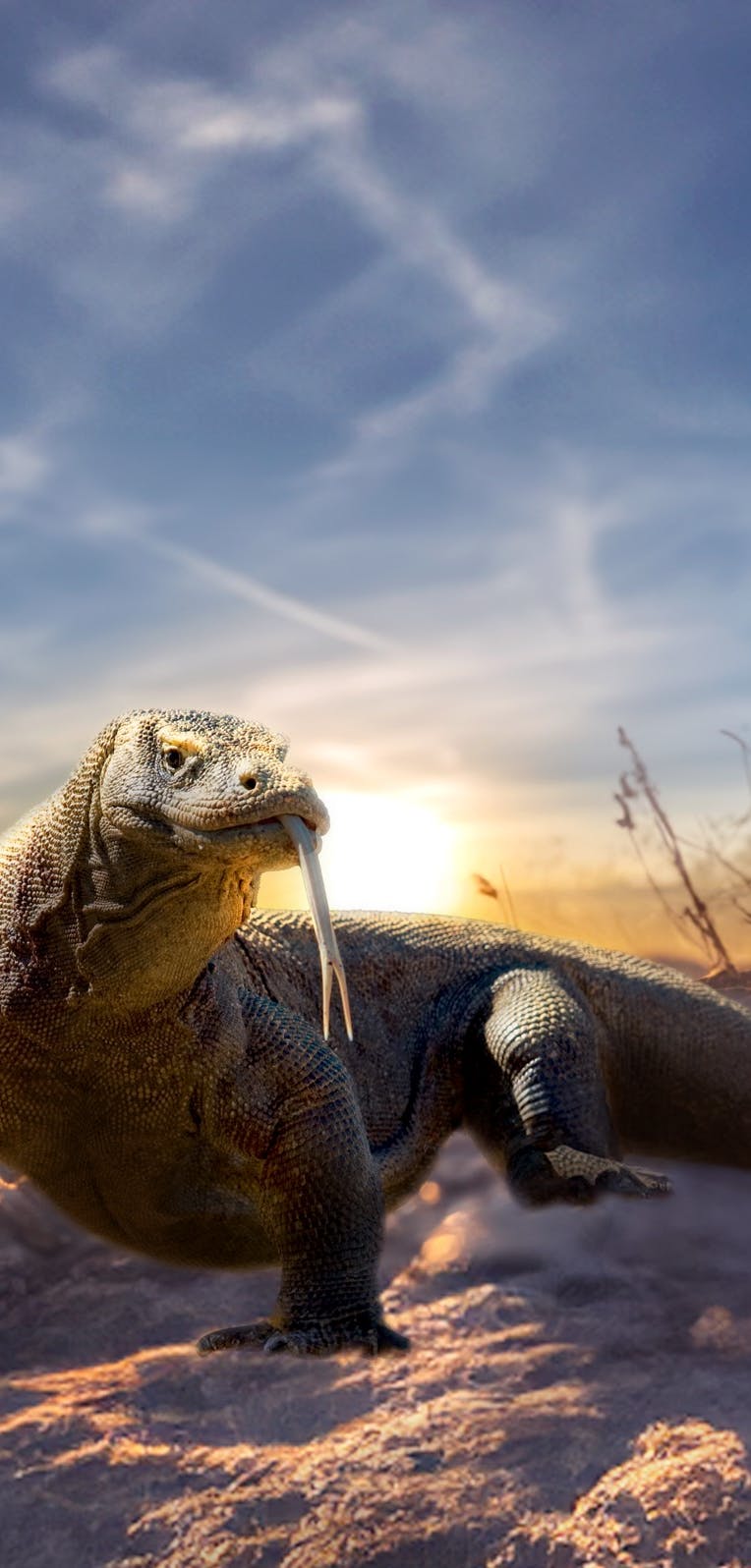



Komodo dragons are found on four small islands in Indonesia: Flores, Rinca, Padar, and Komodo, from which the dragons derive their name. There, they inhabit mixed landscapes of forests and dry savannas. They are also found in coastal areas with mangrove forests. Young animals primarily stay in wooded areas, where they climb trees for protection against predators.
Komodo dragons sometimes hunt large prey such as deer, wild boars, and buffaloes. For this, they possess a deadly weapon: venom glands. When they bite into prey, the venom from these glands enters the bloodstream of the prey animal. Once poisoned, the prey slowly weakens and will eventually succumb to the venom. Sometimes, the Komodo dragon may pursue its prey for a week before the prey succumbs to the venom. Afterward, a substantial feast follows: the Komodo dragon can eat up to 80% of its body weight in one meal!
One of the biggest threats to the Komodo dragon is the loss of habitat. The local population, for example, burns pieces of savannah to make space for agriculture. Additionally, the local population hunts the prey animals of the Komodo dragon. Due to a lack of other food sources, Komodo dragons may attack the livestock of farmers. To protect their livestock, farmers kill dragons that come too close. This has led to a significant decline in the number of Komodo dragons in the wild. However, due to climate change, it appears that the habitat is shrinking further: by 2100, 30% of the islands where they are found may be underwater due to rising sea levels.
The Komodo dragons at Blijdorp are kept at a temperature of 30ºC, approximately as warm as the region where they naturally occur. The adult animals each have their own enclosure and are only put together for mating purposes. The young animals are also kept separate from the parents: Komodo dragons do not engage in nest care and may even eat young Komodo dragons if given the chance! By removing the eggs in time from the mother, the young ones have the opportunity to grow up and contribute to the survival of the species.